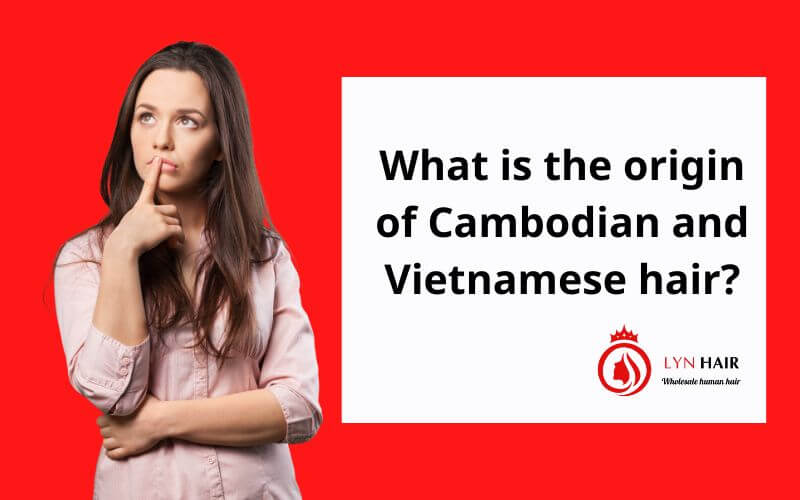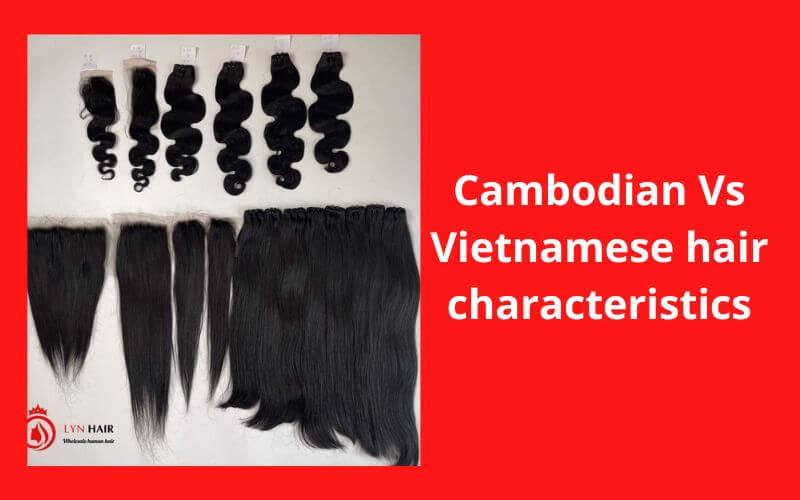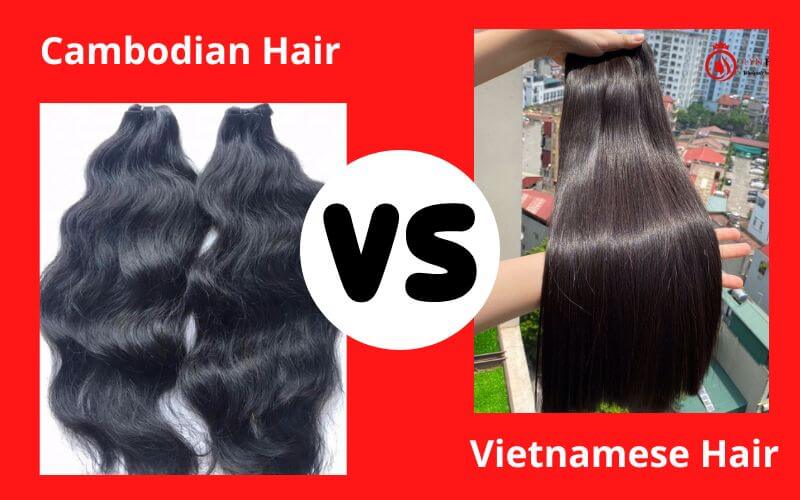Vietnamese hair
Cambodian Hair VS Vietnamese Hair – A detailed comparison
Cambodian and Vietnamese hair are Southeast Asia’s most popular and high-quality hair types. They each have their own distinct customer attraction.
Cambodian hair is considered to be thicker and more lustrous than Vietnamese hair. It is also slightly coarse in texture, making it perfect for those who want a fuller look. Cambodian hair is ideal for creating voluminous hairstyles.
Vietnamese hair is finer and silkier than Cambodian hair, although still very luxurious in texture. It is well-loved by customers because of its natural shine and body. Vietnamese hair is more suitable for those who want a sleek and straight look.
According to industry experts, the quality, pricing, and selection of products available for Cambodian hair vs vietnamese hair vary significantly. Continue reading to understand more about the implications of these inconsistencies.
What is the origin of Cambodian and Vietnamese hairs?

Cambodian hair’s origin
- Cambodian hair is mostly derived from Khmer people, who constitute the majority and account for more than 90% of Cambodia’s population.
- Cambodian hair is often harvested from those living in rural parts of Western Cambodia who have poor living conditions.
- Women in poverty here grow their long black hair to sell. This hair selling is also regarded as an income to assist them in meeting their living expenditures and reducing their financial strain.
- Cambodian women seldom style their hair before selling it to manufacturers, which results in soft and silky Cambodian hair.
Vietnamese hair’s origin
- When comparing Cambodian hair to Vietnamese hair, Vietnamese hair has a larger supply due to a population of more than 90 million people, which is six times the population of Cambodia.
- Vietnamese hair is mostly derived from Vietnam’s northern highlands area, where ethnic minorities concentrate. Ethnic women have a heritage of cultivating long hair using only natural products and no chemicals. That’s why the finish of Vietnamese hair is smooth and shiny.
- Vietnamese hair is classified into two types: Remy hair (collected from more than one individual) and virgin hair (taken from only one donor). The majority of Vietnamese hair extensions are created from Remy hair that has been carefully selected for consistency in quality and looks.
- Following the collection of Vietnamese hair, the manufacturers clean and process it before presenting it on the market. Vietnamese hair is also the greatest quality hair in the latest hair extension market.
>> Read more: Vietnamese hair vs Chinese hair: Which one should you choose?
Cambodian Vs Vietnamese hair characteristics
Texture

Although Cambodia and Vietnam are both Southeast Asian nations, the texture of Cambodian hair differs from Vietnamese hair owing to the women’s DNA, environment, weather, and dietary habits. The paragraph that follows will explain this distinction.
Cambodian hair texture: Cambodian hair has a rough texture, a dense cuticle, is somewhat curled and has moderate softness due to the country’s environment being separated into two seasons, the long rainy season and the long dry season. Cambodian hair has a straight shape and is easy to style, such as curled or ruffled, depending on the user’s taste.
Vietnamese hair texture: When comparing Cambodian and Vietnamese hair, Vietnamese hair is softer and smoother, with a thinner and less coarse hair fiber and cuticle. It is difficult to perplex because of its straight hair texture. Vietnamese hair strands are lustrous and stronger, so treatments like curling or straightening will not cause knots or breakage in your natural hair.
>> SHOP NOW: Vietnamese hair weave
Hair quality
- Hair from Cambodia is taken from a healthy donor; hair from Cambodian hair providers is only acceptable if it has not been chemically processed. The cuticles are usually intact and aligned in the same direction, which reduces the possibility of matting and tangling.
- Conversely, it would not be an overstatement to state that Vietnamese hair is indeed one of the best quality hair types on the market today. Silky and smooth hair is characteristic of Vietnamese women. Vietnamese women’s hair is recognized as the highest quality due to their modest lifestyle and good eating habits.
- Aside from that, Vietnamese people see their hair as a valuable asset that enhances their attractiveness and youth. Vietnamese ladies wash their hair with natural herbal components, which have been scientifically shown to increase scalp and hair health, as well as hair strength and length. Vietnamese human hair is really smooth and silky.
Cost-effectiveness
Which is cheaper, Cambodian or Vietnamese hair? Because it is more widely accessible, Cambodian hair is the obvious choice. There are several reasons why Cambodia may offer hair at a lower price than some other countries on the global market.
Because Cambodia has a tiny population and a limited quantity of Cambodian hair, the country lacks a specialist hair industry. Because there are just a few tiny hair companies in Cambodia with little contemporary machinery, manufacturing expenses are expensive. The price of Cambodian hair, however, is slightly lower than the price of Vietnamese hair when compared because Cambodian hair is of lower quality than Vietnamese hair.
>> Read More: Vietnamese hair vs Brazilian: which is better?
Conclusion
As you can see, there are many things to consider when choosing between Cambodian hair vs Vietnamese hair extensions. Each type of hair has its own set of pros and cons. Ultimately, the best type of hair extension for you will depend on your own personal preferences as well as your budget.
We hope that this article has helped you narrow down your search so that you can find the perfect set of extensions for your needs!


HI MS KARA IM INTERESTED IN PURCHAING RAW VIETNAMESE STRAIGHT HAIR IN LENGTHS FROM 50 TO 60 INCHES.IM ALSO INTERESTED IN A HD 13X4 OR 13X6 FRONTAL PIECE CLOSURE IN 40 INCHES.NOT A WIG.THE ACTUAL HD 40 INCH FRONTAL.SEND ME THE PRICES FOR ALL VIETNAMESE AND CAMBODIAN STRAIGHT WITH ALL PRICES FOR THESE EXTRA EXTRA LONG LENGTHS.
Hi, thank you. Can you please contact me via whatsapp +84.936.085.069. Thank you!